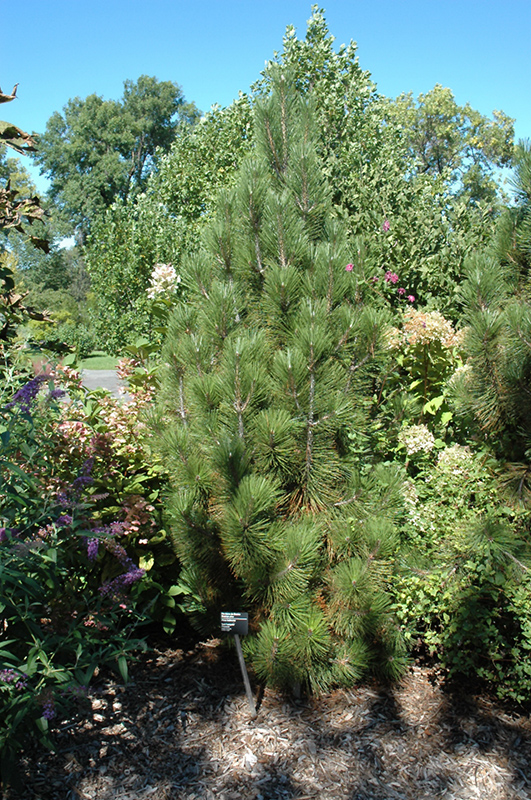Iseli Fastigiate Bosnian Pine
Pinus heldreichii 'Iseli Fastigiate'
Height: 20 feet
Spread: 10 feet
Sunlight:
![]()
Hardiness Zone: 5a
Other Names: Pinus leucodermis, Serbian Pine
Description:
A very narrow upright variety, perfect for tight landscape spaces where a strong vertical accent is desired; nearly vertical branches with long, elegant needles that are also upswept; salt tolerant, a predictable narrow habit, and great disease resistance
Ornamental Features
Iseli Fastigiate Bosnian Pine is primarily valued in the landscape for its rigidly columnar form. It has emerald green evergreen foliage. The needles remain emerald green throughout the winter. The rough brown bark and silver branches add an interesting dimension to the landscape.
Landscape Attributes
Iseli Fastigiate Bosnian Pine is a dense multi-stemmed evergreen tree with a narrowly upright and columnar growth habit. Its relatively fine texture sets it apart from other landscape plants with less refined foliage.
This is a relatively low maintenance tree. When pruning is necessary, it is recommended to only trim back the new growth of the current season, other than to remove any dieback. It has no significant negative characteristics.
Iseli Fastigiate Bosnian Pine is recommended for the following landscape applications;
- Accent
- Vertical Accent
- Hedges/Screening
- General Garden Use
Planting & Growing
Iseli Fastigiate Bosnian Pine will grow to be about 20 feet tall at maturity, with a spread of 10 feet. It has a low canopy, and is suitable for planting under power lines. It grows at a slow rate, and under ideal conditions can be expected to live for 60 years or more.
This tree should only be grown in full sunlight. It prefers dry to average moisture levels with very well-drained soil, and will often die in standing water. It is considered to be drought-tolerant, and thus makes an ideal choice for xeriscaping or the moisture-conserving landscape. It is not particular as to soil type, but has a definite preference for acidic soils, and is able to handle environmental salt. It is highly tolerant of urban pollution and will even thrive in inner city environments. This is a selected variety of a species not originally from North America.
